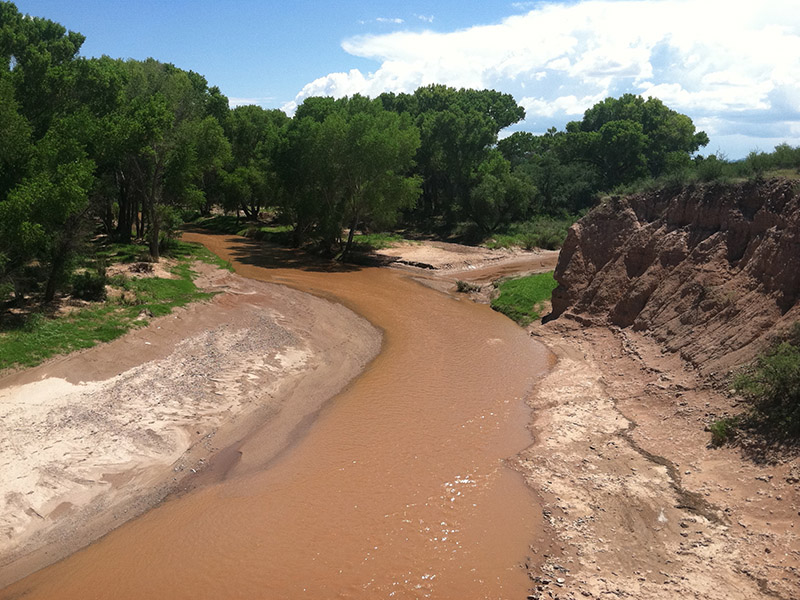Riparian forests are among the most threatened in North America as a consequence of altered hydrological conditions, invasive species and climate change. The Dryland Plant Ecophysiology Lab seeks to identify tree ecophysiological traits that underlie adaptation to heat waves, drought, herbivory and other stressors. Along with collaborators at Northern Arizona University, the research is providing critical information for practitioners to restore and conserve dryland riparian forests under current and future environmental conditions.
Selected recent publications:
Hultine KR, Allan GJ, Blasini D, Bothwell HM, Cadmus A, Cooper HF, Doughty CE, Gehring CA, Gitlin AR, Grady KC, Hull JB, Keith AR, Koepke DF, Markovchick L, Parker JMC, Sankey TT, Whitham TG. (2020) Adaptive capacity in the foundation tree species Populus fremontii: implications for resilience to climate change and nonnative species invasion in the American Southwest. Conservation Physiology (In press)
Hultine KR, Froend R, Blasini D, Bush SE, Karlinski M, Koepke DF. (2020) Hydraulic traits that buffer deep-rooted plants from changes in hydrology and climate. Hydrological Processes 34: 209-222
Hultine KR, Bush SB, Ward JK, Dawson TE. (2018) Does sexual dimorphism predispose dioecious riparian trees to sex ratio imbalances under climate change? Oecologia. 187: 921-931
Hultine KR, Grady KC, Wood TE, Shuster SM, Stella JC, Whitham, TG. (2016) Climate change perils for dioecious plant species. Nature Plants. DOI 10.1038/NPLANTS.2016.109
Recent funding sources:
- National Science Foundation, Macrosystems Biology program (Grant # 1340856)
- US Department of Agriculture, National Institute of Food and Agriculture (Grant # 2015-67013-12138)
